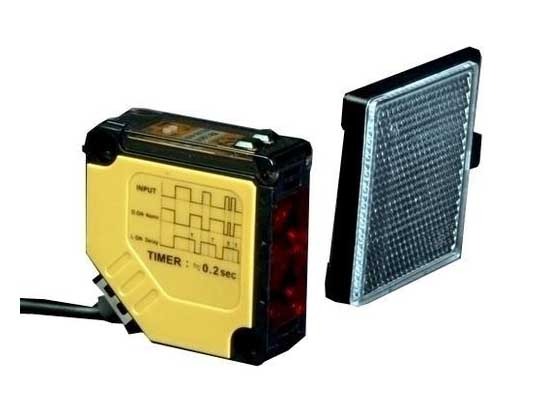A recent market intelligence report that is published by Data Insights Partner on the global Anti-Collision Sensor Market makes an offering of in-depth analysis of segments and sub-segments in the regional and international Anti-Collision Sensor Market. The research also emphasizes on the impact of restraints, drivers, and macro indicators on the regional and global Anti-Collision Sensor Market over the short as well as long period of time. A detailed presentation of forecast, trends, and dollar values of global Anti-Collision Sensor Market is offered. In accordance with the report, the global Anti-Collision Sensor Market is projected to expand at a CAGR of 18.79% over the period of forecast.
Market Insight, Drivers, Restraints& Opportunity of the Market:
According to a study conducted by Business Canada in 2017, car population on road have been rapidly increasing in recent years and in last year car population exceeded 1 billion. USA holds leading position in vehicle population followed by China. There is growing percentage of vehicular accidents worldwide. Developing countries held significant share in road accident injuries and deaths. In general, cyclists, pedestrians, and motor cycle riders are the most vulnerable group to this kind of road accidents. In developed countries, unsafe driving, driving under time pressure and picking high speed in bad weather are some of the reason for road accidents.
With the growing concern for road accidents, automobile companies offer cars with anti-collision sensors. This kind of sensors help to avoid collision with pedestrian or any object in the road of moving vehicle. This will drive the global market for anti-collisions sensors. In the year of 1979, New Car Assessment Program (NCAP) was initiated by United States National Highway Traffic safety Administration. This is a car safety program proposed by government so that automobile manufacturers can follow certain design that ensures safer road, safer cars and safer users as well. Besides high income countries, middle income countries have growing share of vehicle population and adherence to NCAP and car safety regulation has become predominant at present date. Advent of NCAP leads car manufacturers to incorporate car safety design in automobiles and this enhances consumers’ awareness to purchase safe cars. Consumer awareness coupled with government initiative thus raise the demand for anti-collision sensors by car manufacturers worldwide.
The advancement of wireless sensor technology improves universal connectivity. This enables continuous transmission of data to be received by on-board processors and this activates proper responses. New types of software are generated and complex decision making has become easier with it. This advanced form of sensors are abruptly used in autonomous system. Autonomous system implies robotics and this system is extensively used in vehicles. Automation in vehicles is the latest trend and here we can see perfect machine and human interface. This kind of sensor improves efficiency of such vehicles and also ensures car safety to a greater extent. Mercedes S-500 autonomous car uses different types of sensors and these are used to locate any kind of obstacles in the path of the moving car. These sensors help to interpret roadside information and the route pilot in it helps to navigate the road. In this manner, anti-collision sensors have been increasingly used by autonomous cars to prevent any kind of collision in the roadside.
Anti-collisions sensors in cars are able to detect any vehicle or pedestrian on the roadside, anticipate collision and automatically apply correct steering position or apply brake system to prevent any collision. Forward warning collision system in a car is used to alert drivers if there is an impending collision with stationary or slow moving car. This kind of sensors are very costly and they have been used in high end luxury cars. Hence, anti-collision sensors actually raise the cost of cars thus reducing demand for anti-collision sensors. High cost of anti-collision sensors is a restraint to the growth potential of global anti-collision sensor market. Disposable income is on rise on global scale and this affects the consumption pattern of individuals largely. Growing disposable income put an impetus on luxury spending and this increases the consumption of luxury cars.
According to the statistics of Los Angelas based automobile company, Los Angeles Limo Ride, sale of high end luxury cars are on increasing trend presently. The consumption of luxury cars has been fueled by airport goers, middle class population and celebrities. Moreover, this kind of luxury cars come with high technical knowhow and efficient fuel system. One of the most important features of this luxury car is that there are highly efficient anti-collision system embedded in it and that ensures car as well as passengers safety. Hence, with the growing demand for luxury cars, we can anticipate that the global anti-collision sensor market will expand during the forecast period.
Segment Covered:
This market intelligence report on the global Anti-Collision Sensor Market encompasses market segments based on technology, end user and application and country.
In terms of technology, the Anti-Collision Sensor Market is segregated into:
- Radar
- Ultrasonic
- LiDar
- Camera
- Others
By end user, the Anti-Collision Sensor Market is segregated into:
- Automobile
- Aerospace & Defense
- Rail
- Maritime
- Others
By application, the Anti-Collision Sensor Market is segregated into:
- Adaptive Cruise Control
- Blind Spot Detection
- Forward Collision Warning System
- Lane Departure Warning System
- Parking Sensor
- Others
By country/region, the global Anti-Collision Sensor Market has been divided into:
- North America (the U.S., Canada),
- South America (Brazil, Mexico, Argentina and other countries),
- Europe (Germany, France, the U.K., Spain, Italy, Russia, and other countries),
- Asia Pacific (India, Japan, China, Australia and New Zealand and other countries),
- Middle East and Africa (GCC, South Africa, Israel and Other countries).
Profiling of Market Players:
This business intelligence report offers profiling of reputed companies that are operating in the market. Companies such as:
- Robert Bosch GmbH
- Denso Corporation
- Continental AG
- ZF Friedrichshafen
- Delphi Automotive
- TRW Automotive
- NXP Semiconductor
- Texas Instruments
- Aisin Seiki Co
- Autoliv AB
- Others
Others players have been profiled into detail so as to offer a glimpse of the market leaders. Moreover, parameters such as Anti-Collision Sensor related investment & spending and developments by major players of the market are tracked in this global report.
Report Highlights:
In-depth analysis of the micro and macro indicators, market trends, and forecasts of demand is offered by this business intelligence report. Furthermore, the report offers a vivid picture of the factors that are steering and restraining the growth of this market across all geographical segments. In addition to that, Growth Matrix analysis is also provided in the report so as to share insight of the investment areas that new or existing market players can take into consideration. Various analytical tools such as DRO analysis, Porter’s five forces analysis has been used in this report to present a clear picture of the market. The study focuses on the present market trends and provides market forecast from the year 2017-2027. Emerging trends that would shape the market demand in the years to come have been highlighted in this report. A competitive analysis in each of the geographical segments gives an insight into market share of the global players.
Salient Features:
- This study offers comprehensive yet detailed analysis of the Anti-Collision Sensor Market, size of the market (US$ Mn), and Compound Annual Growth Rate (CAGR (%)) for the period of forecast: 2019 – 2027, taking into account 2018 as the base year
- It explains upcoming revenue opportunities across various market segments and attractive matrix of investment proposition for the said market
- This market intelligence report also offers pivotal insights about various market opportunities, restraints, drivers, launch of new products, competitive market strategies of leading market players, emerging market trends, and regional outlook
- Profiling of key market players in the world Anti-Collision Sensor Market is done by taking into account various parameters such as company strategies, distribution strategies, product portfolio, financial performance, key developments, geographical presence, and company overview
- Leading market players covered this report comprise names such as Texas, NXP,ZF TRW among others
- The data of this report would allow management authorities and marketers of companies alike to take informed decision when it comes to launch of products, government initiatives, marketing tactics and expansion, and technical up gradation
- The world market for Anti-Collision Sensor caters to the needs of various stakeholders pertaining to this industry, namely suppliers, manufacturers, investors, and distributors for Anti-Collision Sensor Market. The research also caters to the rising needs of consulting and research firms, financial analysts, and new market entrants
- Research methodologies that have been adopted for the purpose of this study have been clearly elaborated so as to facilitate better understanding of the reports
- Reports have been made based on the guidelines as mandated by General Data Protection Regulation
- Ample number of examples and case studies have been taken into consideration before coming to a conclusion
Reasons to buy:
- Identify opportunities and plan strategies by having a strong understanding of the investment opportunities in the Anti-Collision Sensor Market
- Identification of key factors driving investment opportunities in the Anti-Collision Sensor Market
- Facilitate decision-making based on strong historic and forecast data
- Position yourself to gain the maximum advantage of the industry’s growth potential
- Develop strategies based on the latest regulatory events
- Identify key partners and business development avenues
- Respond to your competitors’ business structure, strategy and prospects
- Identify key strengths and weaknesses of important market participants
Request For Report Sample: datainsightspartner.















